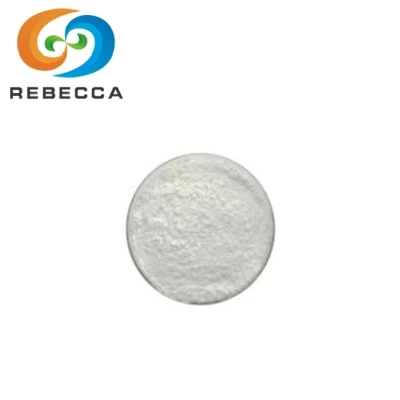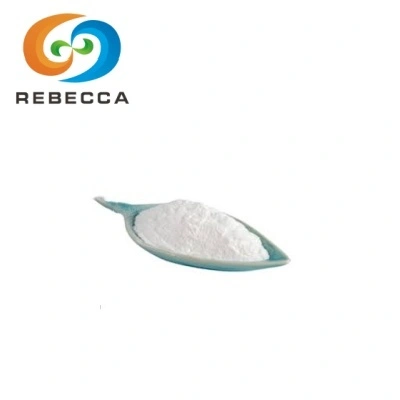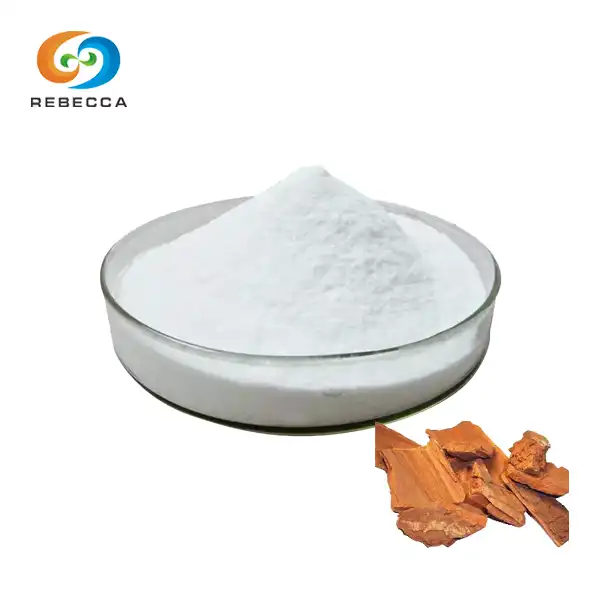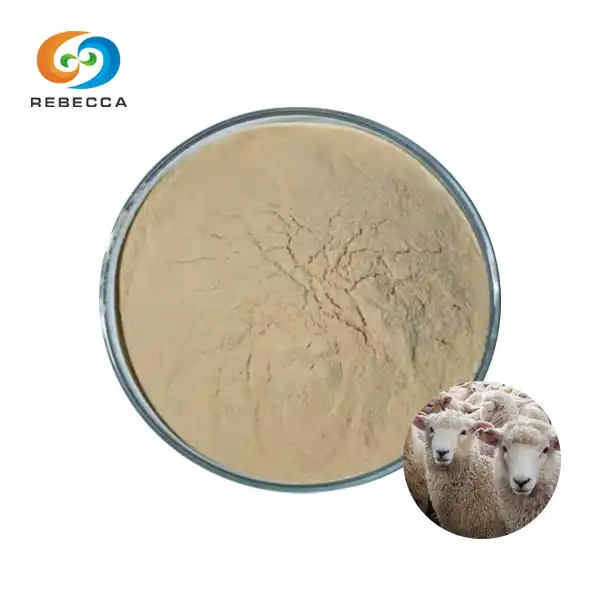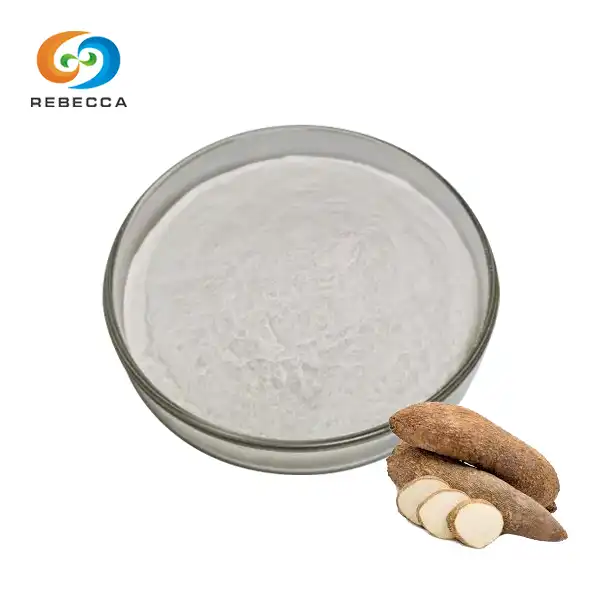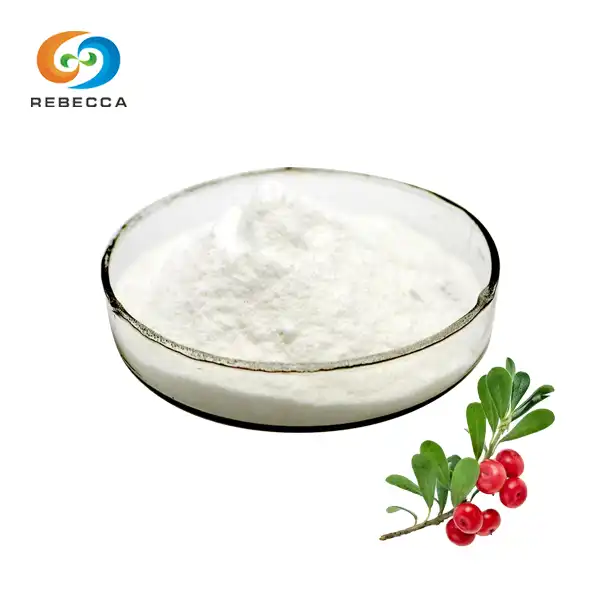Is propyl gallate gluten free?
For those with gluten sensitivities or celiac disease, scrutinizing food additives is a crucial part of maintaining a healthy diet. One such additive that often raises questions is propyl gallate powder. If you've ever wondered, "Is propyl gallate gluten free?" you're in the right place. Let's dive into the world of this common preservative and uncover its relationship with gluten.
Propyl gallate (PG) is 100% gluten free
Good news for the gluten-conscious: propyl gallate is indeed 100% gluten free. This synthetic antioxidant, commonly used to prevent fats and oils from oxidizing, contains no gluten-containing ingredients. Propyl gallate powder, the form in which this additive is often used in food production, is derived from gallic acid and propanol - neither of which has any connection to gluten-containing grains.
Its molecular structure further confirms its gluten-free status. This compound is far removed from the proteins found in wheat, barley, rye, or other gluten-containing grains. Its plant source, typically gallnuts, is also naturally gluten-free.
For those interested in the technical aspects, propyl gallate carries the CAS number 121-79-9. This unique identifier helps food scientists and manufacturers ensure they're using the correct, gluten-free compound in their products
_1730079799361.webp)
Propyl Gallate
【English name】: Propyl Gallate
【CAS No.】: 121-79-9
【Molecular Formula】:C10H12O5
【Plant Source】: Gallnut
【active ingredients】: Propyl Gallate
【Specification】: Propyl Gallate 98%
【Appearance】: White to light beige powder
Why gluten-free: From ingredient sources to manufacturing
To determine whether propyl gallate (PG) is gluten-free, a comprehensive analysis of its raw material origins and full manufacturing process is essential. Throughout the entire journey, from sourcing raw ingredients to producing the final propyl gallate powder, there is no risk of gluten contamination, making the substance inherently gluten-free.
1. Gluten-Free Roots: Raw Material Sources
The production of propyl gallate powder begins with gallic acid, its core precursor. This key ingredient is extracted exclusively from natural plant sources, all of which are free from gluten by nature:
- Gallic acid extraction: Primarily sourced from gallnuts (formed by insect activity on oak trees) and tara pods (from the Caesalpinia spinosa shrub, native to the Andes). These plants do not belong to the gluten-containing grass family (e.g., wheat, barley, rye), so their extracts carry zero gluten risk.
- Reaction with propanol: The extracted gallic acid then undergoes an esterification reaction with propanol, a colorless alcohol derived from petrochemicals or fermented plant sugars (e.g., corn, sugarcane). Propanol, regardless of its origin, is also a gluten-free substance.
This two-step raw material process ensures the foundational components of propyl gallate are entirely free from gluten.
2. Contamination Prevention: Rigorous Manufacturing Controls
Even with gluten-free raw materials, cross-contamination during production remains a key concern. Reputable manufacturers (such as Rebecca Bio-Tech) implement strict quality control (QC) measures to eliminate this risk:
- Dedicated production lines: Propyl gallate powder is manufactured using equipment exclusively reserved for gluten-free ingredients, avoiding contact with gluten-containing products.
- Rigorous cleaning protocols: Between production batches, equipment is sanitized using industry-standard methods (e.g., CIP—Clean-In-Place systems) to remove any residual substances.
- Third-party testing & traceability: Many manufacturers conduct regular third-party lab tests on both raw materials and finished propyl gallate powder to verify gluten levels (typically ensuring compliance with global standards, such as <20 ppm gluten). Full batch traceability also allows for quick identification of any potential issues.
3. A Critical Note: Focus on the Final Product
While propyl gallate itself is gluten-free, its safety in consumption depends on the entire food or supplement it is added to. For example:
- A processed snack containing propyl gallate powder (as an antioxidant) may still include gluten if it uses wheat flour, barley malt, or other gluten-containing ingredients.
- Consumers with celiac disease or gluten sensitivity should always check the full ingredient list of finished products, and look for certified gluten-free labels (e.g., FDA's "Gluten-Free" certification, EU's "No Gluten" logo).
This distinction leads to our next discussion: how to safely select foods and supplements that contain propyl gallate.

How to Safely Choose Foods Containing PG?
1. Read labels carefully: Always check the ingredient list for any hidden sources of gluten. While propyl gallate won't be a concern, other ingredients might contain gluten.
2. Look for "gluten-free" certification: Many products that use propyl gallate are certified gluten-free. This certification provides an extra layer of assurance.
3. Consider the food type: Propyl gallate powder is often used in fats and oils. While these are typically gluten-free, be cautious with products like salad dressings or baked goods that might contain other gluten sources.
4. Contact the manufacturer: If you're unsure about a product, don't hesitate to reach out to the manufacturer for clarification on their gluten-free status.
5. Be aware of cross-contamination: Even if all ingredients are gluten-free, cross-contamination during production can be a concern. Look for statements about shared equipment or facilities.
Remember, propyl gallate powder is just one of many ingredients in processed foods. Its gluten-free status is reassuring, but it's crucial to consider the entire product when making dietary choices.
Propyl gallate's role as a preservative makes it a common addition to many packaged foods. Its ability to prevent rancidity in fats and oils means you might find it in a variety of products, from vegetable oils and meat products to snack foods and cosmetics. The good news is that its presence doesn't compromise a product's gluten-free status.
When choosing foods containing propyl gallate, it's also worth considering its other properties. For instance, propyl gallate appears as a white to light beige powder in its pure form. This characteristic can be useful when assessing the quality of products where propyl gallate is a visible ingredient.

Propyl Gallate Supplier: Rebecca Bio-Tech
If you're a manufacturer looking for a reliable source of gluten-free PG powder, look no further than Rebecca Bio-Tech. As specialists in plant extracts and herbal active ingredients, we offer high-quality propyl gallate powder with a 98% purity specification.
Our propyl gallate is derived from natural gallnut sources and undergoes rigorous quality control to ensure its gluten-free status. With our expertise in natural herbal extracts and our commitment to providing top-quality ingredients to the pharmaceutical, health products, beverage, and cosmetic industries, you can trust Rebecca Bio-Tech for your product needs.
Reach out to us at information@sxrebecca.com. Our team is ready to assist you with any questions and help you find the right solution for your needs.
FAQ
Q1: Is propyl gallate safe for people with celiac disease?
A: Yes, propyl gallate is safe for people with celiac disease. It's a synthetic antioxidant that doesn't contain any gluten-containing ingredients. However, always check the other ingredients in products containing propyl gallate to ensure they're also gluten-free.
Q2: Can propyl gallate cause allergic reactions?
A: While propyl gallate is generally recognized as safe by the FDA, some individuals may experience allergic reactions. These are rare and not related to gluten. If you experience any adverse reactions after consuming products containing propyl gallate, consult with your healthcare provider.
Q3: How can I identify propyl gallate on food labels?
A: On food labels, propyl gallate may be listed by its full name "propyl gallate" or by its E number, E310. It's often found in the ingredient list of products containing fats and oils, as it's used to prevent these from becoming rancid.
References
1. U.S. Food and Drug Administration (FDA). Food Additives Status List. U.S. Department of Health and Human Services.
2. European Food Safety Authority (EFSA). (2014). Scientific Opinion on the re-evaluation of propyl gallate (E 310) as a food additive.
3. Joint FAO/WHO Expert Committee on Food Additives (JECFA). (2001). Evaluation of Certain Food Additives and Contaminants. WHO Technical Report Series 901. World Health Organization, Geneva.
4. Institute of Medicine (US) Committee on Food Chemicals Codex. (2010). Food Chemicals Codex (7th ed.). National Academies Press (US), Washington, DC.
5. Beyond Celiac Organization. (2022). Gluten-Free Food Labeling and Additives
